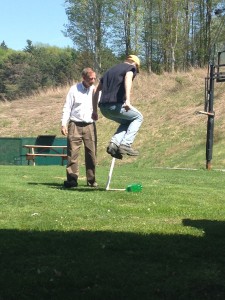The School of Education at Manhattanville College is holding a special seminar for new teachers. As one of several administrators who will be giving advice, I have outlined a few key points worth noting for new teachers. As we know, the art of teaching is something that one learns over time with experience. However, there are a few ground rules that lead to success
You are a professional. Dress like one! Google and Facebook may have a climate that allows for casual Fridays with t-shirts and shorts, but your school does not! Unless it is a field day, showing up to school in flip flops, a tank top or shorts is not acceptable. Regardless of how other teachers dress, you need to remind yourself that how you dress sends a message to students, your peers and your administrators about how you see yourself and your role. You need to communicate through your dress that you care about yourself and your job.Your administrator should never have the passing thought, “is that appropriate?”
Be value added and be authentic! 1) Come prepared to all meetings showing interest and enthusiasm. Be prepared with documentation such as grades, sample work, attendance, or any other pertinent data. 2) And… don’t be that teacher who asks a question or speaks at every faculty meeting. It won’t bother your administrator, but it will your peers! If you have an important question email your principal or ask your mentor! 3) And finally, you don’t need to “kiss up” to the principal or Superintendent. Be passionate about what you do and do your job to the best of your ability. That is enough.
Use Good Judgment. The students are not your friends or your own children. Love what you do, love them, support them, learn from them, but keep a professional boundary. Here are some simple examples: 1) You purchase wine to give out as gifts at the holidays. Don’t let students deliver the wine! 2) Communicate! Don’t leave Back to School Night because you think your conferences are finished. Parents can show up at any time, and if you haven’t told your principal, there’s a good chance that sneaking out for the day or night, will come back to bite you! Also, don’t leave your classroom at any time without another adult being present. You would be amazed at what can happen when you are gone… A good example, in one school, when a teacher left the room unattended, two boys started roughhousing, and one put his hand through the window! Don’t ever forget that those children are YOUR responsibility!
Use Social Media! This may sound contrary to what you have been told. No, you should not post pictures of you drinking wine at Happy Hour. But, you should Join Twitter, Instagram, etc. as a professional to connect with fellow teachers from across the country and across the world who are sharing new ideas. Social media is also a great way to communicate the good things going on in your classroom and get new ideas to keep you fresh and current!
Hard days happen! There are going to be hard days. Days in which you feel like you entered into the wrong profession. That’s okay. Working with children can be unpredictable at times. What works with one student, doesn’t always work with another. Just take it day by day, take care of yourself and do one other thing… Make sure that every card, every kind note, and letter that you receive from a student, a parent or a peer is tucked away in a special folder for safe keeping. On those hard days, go back and read them. This should give you the motivation to keep going when things get rough.
Teaching is the best profession in the world. Savor every moment of fun and hard work. You are making a difference, even when you think you are not!
